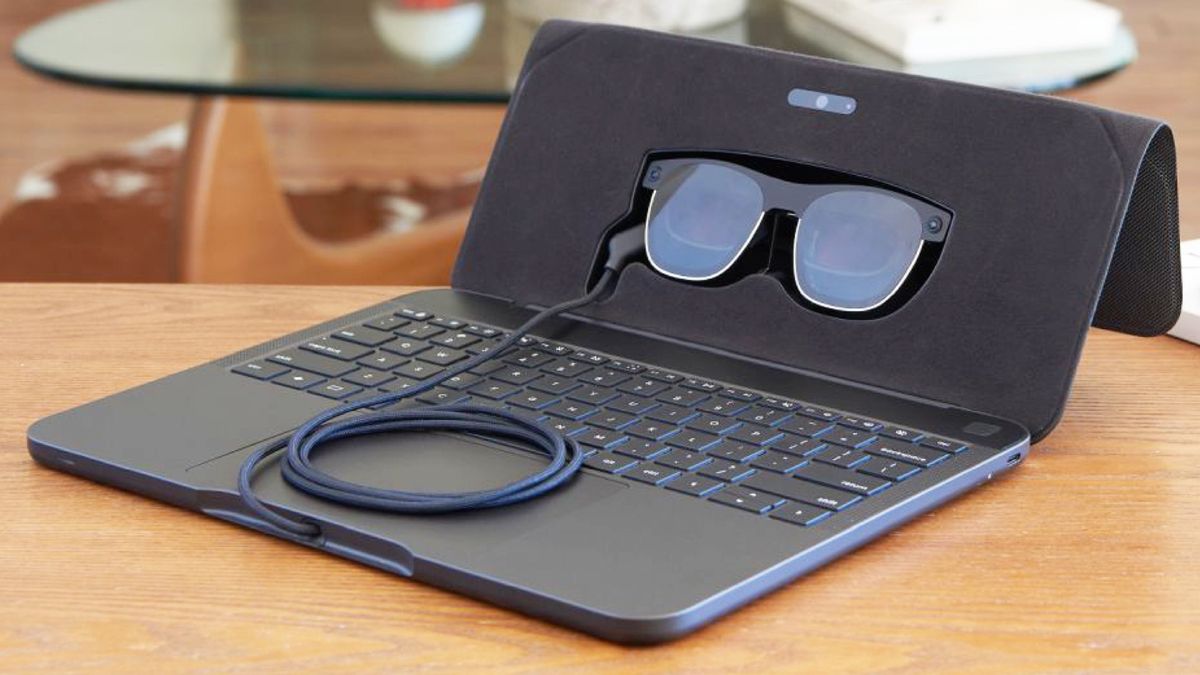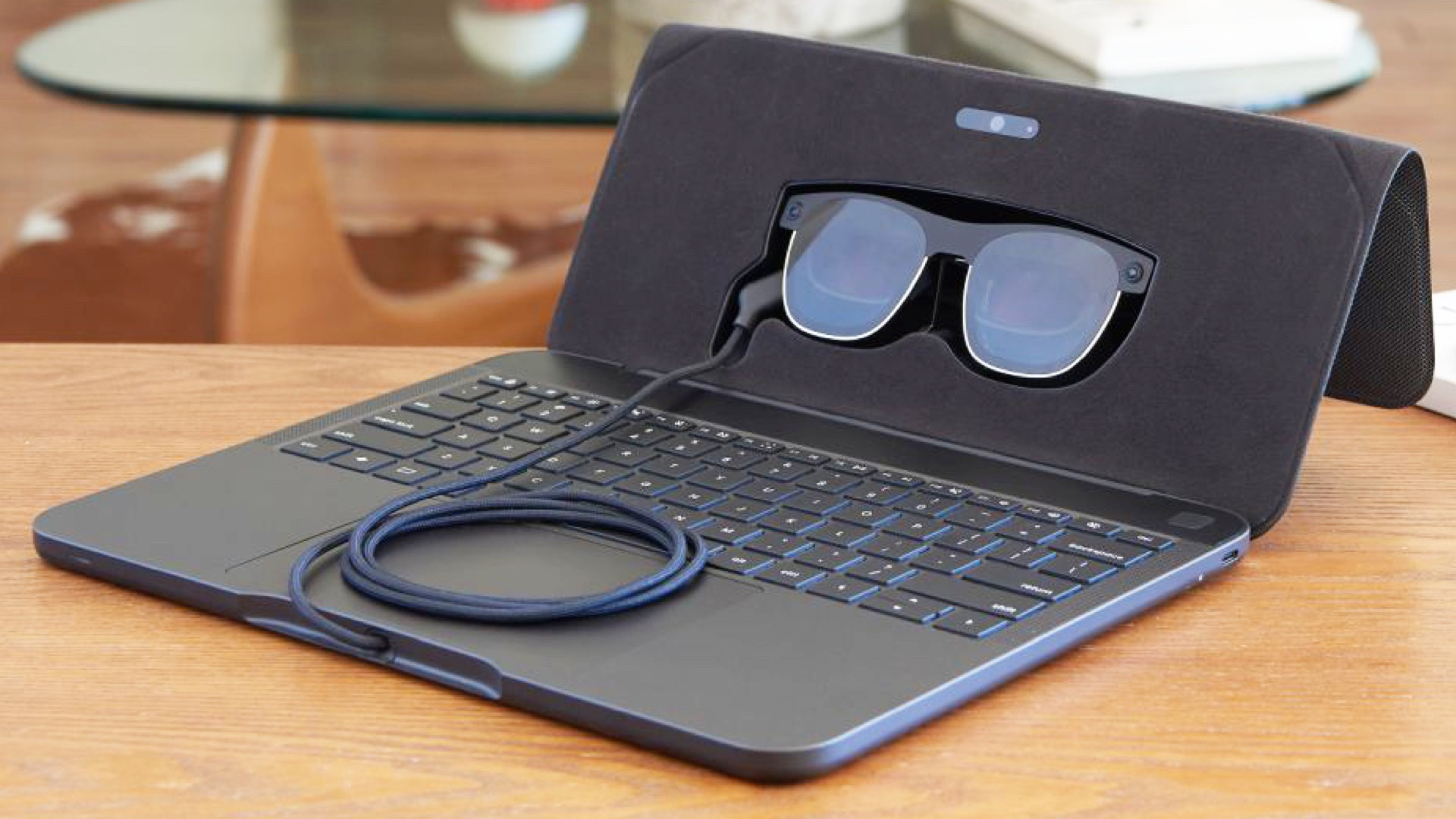

Laptops are all about freedom. The freedom to work wherever you choose without a bulky desktop PC or a power cord tying you down. However, the traditional clamshell design is a cage to some manufacturers, one they’re all too eager to break free from.While the clamshell form factor still reigns supreme, it’s not without its contenders. For example, 2011’s rise of “hybrid,” 2-in-1 convertible laptops that are now commonplace in devices like the HP Spectre x360 14.And manufacturers are keen to bring additional screens into play, from 2009’s Lenovo’s Thinkpad W700 with its built-in extendable tablet to modern devices like the Asus ZenBook Duo, or Lenovo Yoga Book 9i — and some frankly absurd variants along the way.But what’s next for the laptop? Will it be Lenovo’s transparent laptop or will AI transform the laptop into handheld devices like how the Steam Deck and ROG Ally X represent a potential reinvention of the gaming laptop? Well, in my opinion, and many others, the next step is augmented reality.Augmented reality: The next step for laptop computers?Modern laptops are stuck between two desires, smaller form factors and larger displays. Both of which have their benefits, but you can’t gain more of one without giving up some of the other.Unless you turn to augmented reality — where your display is no longer bound or constrained by the body of the laptop at all.That’s something Sightful is looking to achieve with its new Spacetop G1 — a display-free laptop that relies on AR windows and screens instead of a traditional screen.Get our in-depth reviews, helpful tips, great deals, and the biggest news stories delivered to your inbox.To offer this, Sightful has teamed up with XREAL (the company responsible for manufacturing the Air 2 AR Glasses we reviewed last year) to design a pair of AR glasses unique to the Spacetop that handle the visual element of its computer.The laptop component of the Spacetop G1 works as any other would, though this laptop runs on SpaceOS — a proprietary operating system based on Android that’s designed primarily for productivity.The user relies on the AR glasses to receive all of the visual information, which places them within a virtual space that houses all of their regular interactive computing elements.To anyone who hasn’t tried a pair of AR glasses before, this technology seems like magic — and having used AR glasses for some time, even replacing my home monitors with them, I can say that the reality can sometimes match up with that feeling.Spacetop G1 AR laptop: A confident step in a new directionFor the first time ever there’s a reason to use spatial computing that springs from an everyday need.Tamir Berliner, CEO of SightfulWhile the tech is impressive and can easily amaze, not everyone is as convinced that spatial computing is ready to make the leap into our laptops as Sightful CEO Tamir Berliner.On whether or not he thinks it’s time for AR to go mainstream for computers, Berliner echoes the thoughts of many who see the potential in this technology as he writes to Sightful’s blog “Is it the right time? Is the technology there yet? Is it just a fantasy?”Ultimately, Berliner believes so, “For the first time ever there’s a reason to use spatial computing that springs from an everyday need. That answer is productivity, and the product is Spacetop G1.”However, while spatial computing is absolutely on the rise, is a product like the Spacetop the way to go? While I’m an avid believer that smart glasses will be one of the next big things, earnestly believing that AR Smart glasses are everything the Vision Pro should have been, I’m no expert on the market itself and how prepared it is to go mainstream.Thankfully, Laptop Mag was able to reach out to somebody who is: Emily Wang, co-founder of VITURE, whose XR (mixed reality) glasses are one of, if not the, most well-rounded and polished options on the market.AR Glasses and smart glasses like the VITURE Pro XR (shown above) are among the most well-rounded products in the AR space outside of headset options like Meta’s Quest 3 or Apple’s Vision Pro. (Image credit: VITURE)Spatial computing: Almost ready (but not quite there)Wang’s thought process is slightly different to Berliners, telling Laptop Mag “The concept of an AR laptop is certainly an interesting idea, but I foresee issues in its implementation, especially as it is/if it is Android based.””For many, what they get may not outweigh what they sacrifice to get it.”Emily Wang, co-founder of VITUREThe Viture co-founder raises an incredibly valid point here, Spacetop’s SpaceOS operating system will lack much of the functionality that the majority of laptop owners are used to, offering a feature set more akin to an Android smartphone or Chromebook than anything else.Considering the Spacetop G1’s hefty $1,900 asking price, there’s a lot of the traditional laptop experience missing from Sightful’s offering, and, as Wang puts it, “For many, what they get may not outweigh what they sacrifice to get it.”Deftly defining the issue at hand, Wang hits the nail on the head, “At that price point, users could just as easily get a MacBook (or a premium Windows laptop) and a pair of XR glasses like ours.”While Sightful’s design is impressive, it’s a valid point to raise about a stand-alone option being able to pair with any device you choose. For example, VITURE’s AR glasses work with Windows laptops, MacBooks, iPads, smartphones, and even handheld gaming devices like the Nintendo Switch or Asus ROG Ally.Far from dismissing Sightful’s efforts, Wang goes on to compliment the company, stating “I really appreciate and respect the innovation required for a product like this. It’s still very cool to see.”We asked Wang if AR computing is ready for the mainstream, to which we got a surprising answer from the co-founder of an AR glasses company, “I would say AR is almost ready, but not quite there.”Contextually speaking, Wang doesn’t mean that today’s AR isn’t viable, simply that breaking into the mainstream is an enormous hurdle — one that a $1,900 laptop might fail to clear, much in the same way that Apple’s $3,500 Vision Pro headset failed to drum up the level of market excitement many were hoping for.Spatial computing: Softly, softly catchee monkeyWhile augmented reality, virtual reality, and mixed reality markets are at their highest visibility, there are still some ways to go before they truly become “mainstream.”Highlighting this struggle, Wang tells Laptop Mag “We see the market booming as more and more people are excited about it, but another hurdle we’ve hit is that people have to see it to believe it.”It’s hard to get across just how impressive these new visual mediums are. On the Vision Pro, there’s a reason that Tim Cook recently stated that the experience can be “So profound that people are often emotional the first time they try it.”Speaking on the difficulties of getting people to that point, Wang continues “Most peoples’ impressions on AR/VR/XR were made 5+ years ago — blurry, low fidelity, heavy, and lousy. It is not a cheap purchase and they have to know what they can really get.”Emily Wang and VITURE might not think this is the moment AR breaks into the mainstream, but they’re willing to put in the work (just as Sightful is doing with the Spacetop G1) to make it happen eventually by refining and perfecting the technology we have now to make it more welcoming to wider audiences.Wrapping things up, Wang painted a promising image of the road ahead for AR, “In the end, focusing on the whole experience is how we plan to pass the tipping point so that the masses will adopt it and help us push forward toward making easy, portable, and affordable AR a reality.”For readers interested in exploring spatial computing and AR further, the Sightful Spacetop G1 can now be reserved for $100 at sightful.com with plans to ship in October 2024 for $1,900.Alternatively, for those interested in experiencing an AR smart glasses experience, VITURE’s latest Pro XR Glasses are available to purchase today for $459 and ship this month.More from Laptop MagBack to Apple MacBook ProSORT BYPrice (low to high)Price (high to low)Product Name (A to Z)Product Name (Z to A)Retailer name (A to Z)Retailer name (Z to A)Load more deals






